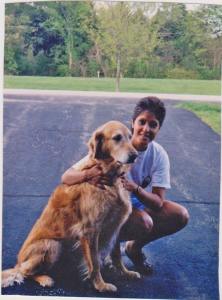The ASPCA has recently released a Position Statement on Responsibilities of Animal Shelters. We are very pleased that they have put a high emphasis on shelter transparency and proactively reuniting lost pets with their families.
Below are some excerpts from this Position Statement. Does your local shelter or stray holding facility do these things? We would like to see American shelters and stray holding meet these standards and feel that there is a need for legislation to enforce them. Please discuss these items with your state legislators and ask that they be mandated for all American shelters and stray holding facilities.
Goal 3: Owned animals are quickly and reliably returned to their owners
A. Shelters must check for ID, including microchips, tattoos, etc., at the time of intake. Checking animals for identification at the time of intake should be required by law of all animal shelters, public and private. The administrative burden associated with this requirement is minimal compared to the benefits of quickly reuniting animals with their owners. This requirement should be extended to owner-surrendered animals, as the information concerning ownership of a micro-chipped animal can confirm current ownership, shed light on possibility that other owners may exist, and must be updated regardless in the event of a subsequent adoption.
B. Shelters must serve notice to identified owners of stray animals, and the hold times for stray animals must account for mail delivery. Even in 2015, the U.S. Mail continues to represent the method by which many, if not most, people receive communications from local government, utility companies, financial institutions, the courts, etc. Thus, the mail represents a relatively reliable means of communication, and while other means of contacting owners are encouraged, shelters should be required to serve notice to identified owners by mail, regardless of other methods of communication that might be attempted. In order to provide owners with a meaningful opportunity to reclaim their animals, stray animal hold times should be of sufficient length to account for the additional time that notice by mail requires.
C. Shelters must provide public notice, appropriate to the community, of stray animals entering the shelter. Shelters have an obligation to give notice to the community of stray pets that enter their facilities in order to assist and facilitate the return of those pets to their owners. While online postings, whether on a shelter’s website or other web platforms, have become commonplace, this may still not be feasible for all shelters. Thus, the form this notice should take may vary by community. Nevertheless, notice that is reasonably calculated to reach community members should be required of all shelters accepting stray animals.
D. Shelters must provide clear notice to the public concerning shelter locations, hours, fees and the return-to-owner process. The ASPCA strongly supports requiring the provision of this information to the public. Where possible, it should be available on a shelter’s website, but certainly, information regarding fees and the return-to-owner process should be available in written form at the shelter itself.
E. Shelters must establish a reasonable process for matching stray animals admitted to the shelter with reports of lost pets received by the shelter from owners. The ASPCA supports a requirement that shelters establish and publicize a reasonable process for helping stray pets return to owners in search of them. The most effective approaches will include a process for monitoring lost pet reports for possible matches with stray animals admitted to the shelter. However, because the appearance of an animal may change significantly while lost, or information provided in lost pet reports may be incomplete or inaccurate, the ASPCA believes that shelters should provide clear notice to owners searching for their lost pets that there is no substitute for visiting the shelter in person.
F. Shelters must be accessible to the public during reasonable hours for the return-to owner process. The ASPCA supports a requirement that shelters be accessible during reasonable hours to owners seeking to reclaim their pet. These hours should include some reasonable additional period of time beyond the typical workday (e.g. 9am to 5pm Monday through Friday) so that pet owners who may not have flexible work schedules have the best opportunity to reclaim their pets. What constitutes “reasonable” access depends on factors including the length of the hold period, the nature of the community, e.g., urban, suburban, rural, and the resources of the shelter.
G. Shelters should be authorized and encouraged to reduce or waive redemption fees. For the reasons discussed above in relation to adoption and placement, the ASPCA supports the granting of specific authorization for shelters to reduce or waive fees to owners seeking to reclaim their pets and encourages shelters to regularly and consistently use this tool to reunite more pets with their families.
H. Return-to-owner from the field should be expressly authorized. The ASPCA strongly supports legal authorization of return-to-owner from the field for animals with identification. This practice not only reduces burdens on shelters, but it straightforwardly accomplishes the goal of quick and reliable return.




